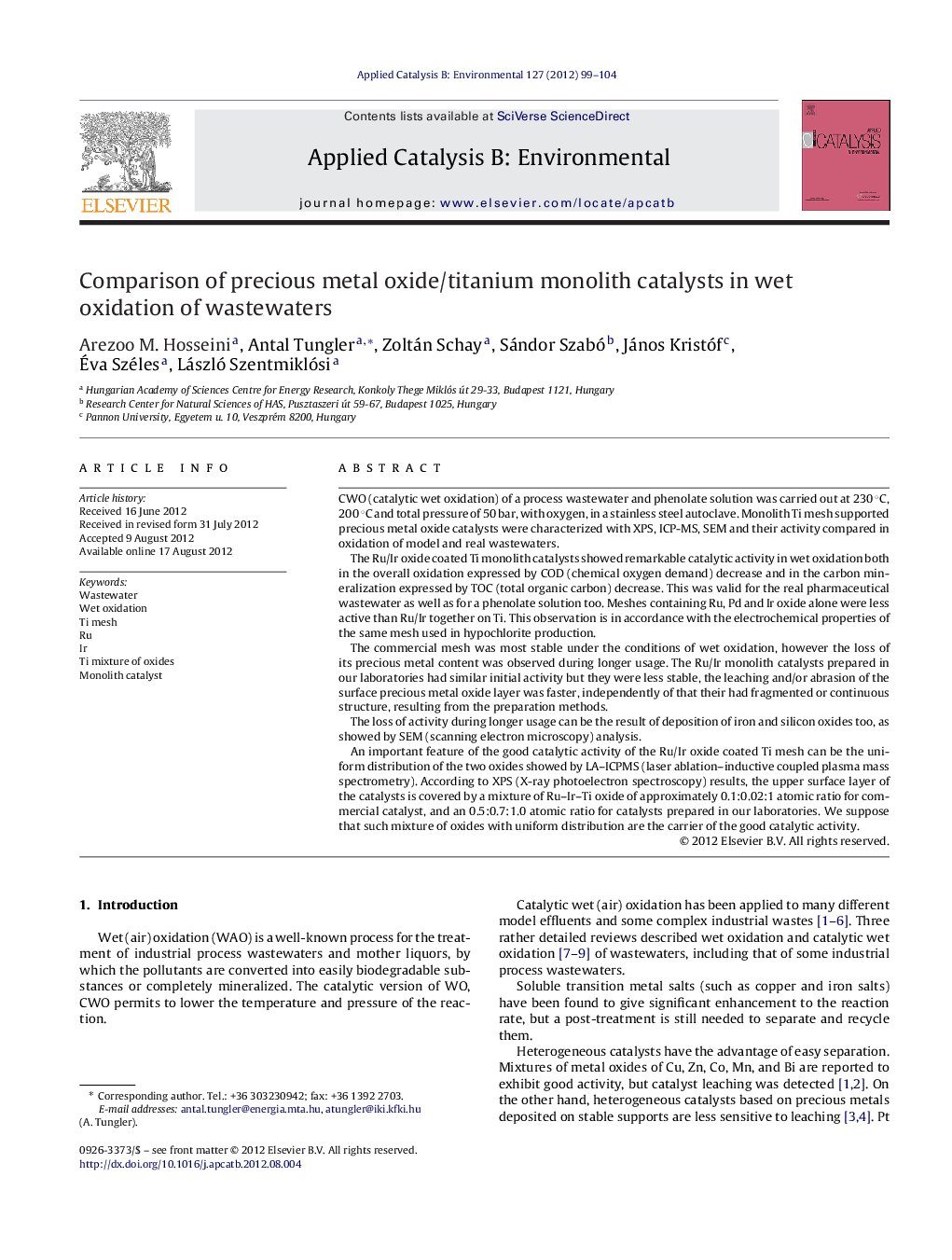| Article ID | Journal | Published Year | Pages | File Type |
|---|---|---|---|---|
| 46266 | Applied Catalysis B: Environmental | 2012 | 6 Pages |
CWO (catalytic wet oxidation) of a process wastewater and phenolate solution was carried out at 230 °C, 200 °C and total pressure of 50 bar, with oxygen, in a stainless steel autoclave. Monolith Ti mesh supported precious metal oxide catalysts were characterized with XPS, ICP-MS, SEM and their activity compared in oxidation of model and real wastewaters.The Ru/Ir oxide coated Ti monolith catalysts showed remarkable catalytic activity in wet oxidation both in the overall oxidation expressed by COD (chemical oxygen demand) decrease and in the carbon mineralization expressed by TOC (total organic carbon) decrease. This was valid for the real pharmaceutical wastewater as well as for a phenolate solution too. Meshes containing Ru, Pd and Ir oxide alone were less active than Ru/Ir together on Ti. This observation is in accordance with the electrochemical properties of the same mesh used in hypochlorite production.The commercial mesh was most stable under the conditions of wet oxidation, however the loss of its precious metal content was observed during longer usage. The Ru/Ir monolith catalysts prepared in our laboratories had similar initial activity but they were less stable, the leaching and/or abrasion of the surface precious metal oxide layer was faster, independently of that their had fragmented or continuous structure, resulting from the preparation methods.The loss of activity during longer usage can be the result of deposition of iron and silicon oxides too, as showed by SEM (scanning electron microscopy) analysis.An important feature of the good catalytic activity of the Ru/Ir oxide coated Ti mesh can be the uniform distribution of the two oxides showed by LA–ICPMS (laser ablation–inductive coupled plasma mass spectrometry). According to XPS (X-ray photoelectron spectroscopy) results, the upper surface layer of the catalysts is covered by a mixture of Ru–Ir–Ti oxide of approximately 0.1:0.02:1 atomic ratio for commercial catalyst, and an 0.5:0.7:1.0 atomic ratio for catalysts prepared in our laboratories. We suppose that such mixture of oxides with uniform distribution are the carrier of the good catalytic activity.
Graphical abstractFigure optionsDownload full-size imageDownload as PowerPoint slideHighlights► Ru/Ir oxide/Ti monolith catalysts showed remarkable catalytic activity in WO. ► Good catalytic activity is tied to the uniform distribution of the two oxides. ► Beneficial was the fragmented structure of Ru and Ir oxides. ► Commercial mesh was most stable among the condition of wastewater wet oxidation. ► Loss of precious metal content was observed during longer usage.
